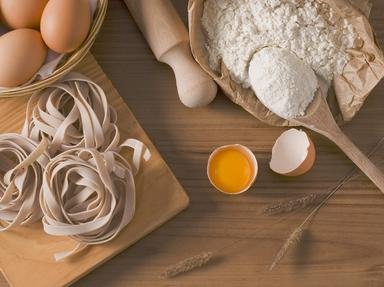Quiz Answer Key and Fun Facts
1. Our first stop here is Russia. Which cake, with milk and honey as its main ingredients, is pictured here?
2. This American bread is particularly popular in Southern cooking, and has its roots in Native American cuisine. Which cereal is used to make it?
3. Baklava is a sweet pastry enjoyed all over Western and Central Asia, particularly Turkey. Note the greenish colour of the Israeli baklava pictured here - which nut gives this baklava its colour?
4. Which type of flatbread, originating from Norway and often made with riced potatoes, is pictured here?
5. This fruity bread is panettone, and it's from Italy. At which time of year is it traditionally eaten?
6. If you're partial to Indian food, you might have eaten these pastries as a starter or side dish. What are these spicy little pockets of joy called?
7. Aussie quizzers will be familiar with the cake pictured here; it's a sponge cake covered in chocolate and rolled in coconut. What is the name of this delightful treat?
8. Pictured here are some home-made soft pretzels. Pretzels might be considered an American snack, particularly the smaller and harder type, but which European country's immigrants introduced them to the USA?
9. Which green ingredient, which is more well-known as a hot drink, is used as a cake flavouring in Japan?
10. These pastries are empanadas, which are eaten in Spanish-speaking countries in South and Latin America. In which southeast Asian country could you also find empanadas?
Source: Author
Kankurette
This quiz was reviewed by FunTrivia editor
jmorrow before going online.
Any errors found in FunTrivia content are routinely corrected through our feedback system.
